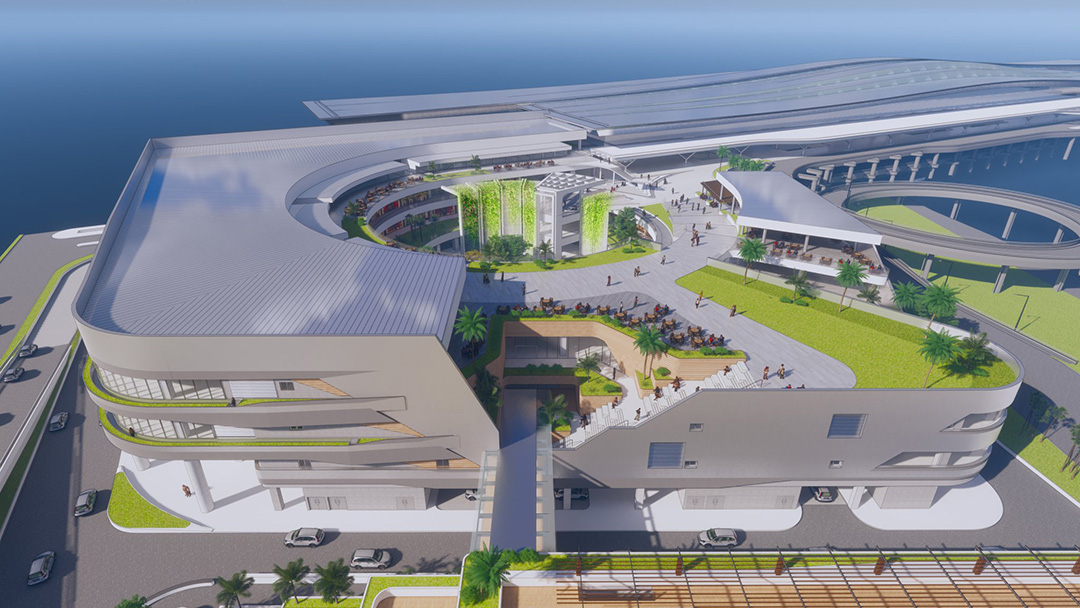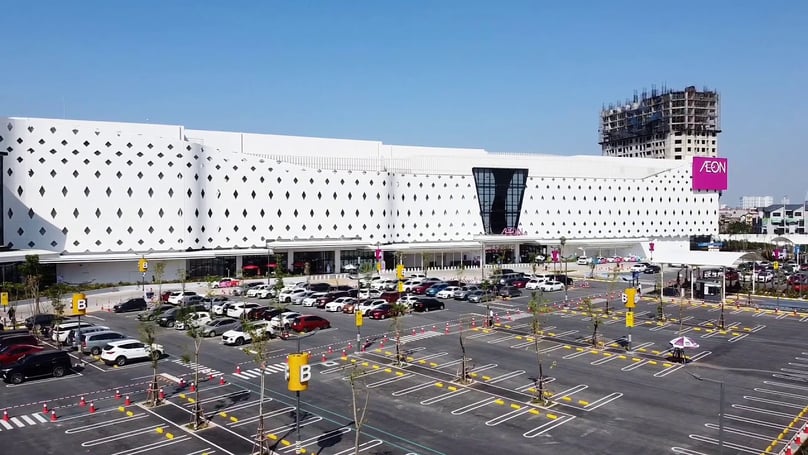POTENTIAL OF GREEN HVAC TECHNOLOGY IN SMART HOME IN VIETNAM
The demand for Green HVAC and Smart Home technologies is escalating in modern construction, particularly in Vietnam, where the trend is gaining popularity in apartment and housing projects. This surge in demand aligns with the global movement towards sustainable development and combating climate change. As such, there are numerous opportunities for the application of green HVAC technology in smart homes in the Vietnamese market.
Green HVAC Technology Practices & Smart Home Management in Vietnam.
As a Grand View Research report, the global HVAC market is predicted to touch around US$367.5 billion by 2030 and expand to 5.6 billion AC units by 2050. In Vietnam, green HVAC technology and smart-home systems are increasingly applied in housing projects, luxury apartments, and office buildings. Intelligent integration of green HVAC products like air conditioners, ventilation systems, and water heating systems helps optimize their performance and save energy. This trend is practical in the context of Vietnam’s integration and environmental concerns across all sectors, leading to several combined benefits like improved living standards, environmental protection, economic growth, and investments in construction projects.
The Statista report notes that the smart home market in Vietnam is experiencing robust surge. The total revenue of this market is estimated to reach $460.10 million in 2027, with a CAGR of 12.51%. With such potential, the number of households with smart homes is expected to reach 5.6 million by 2027, with a household penetration rate of 22.6%.
Vietnam has implemented a series of policies to promote the adoption of green HVAC technology in smart homes, aimed at minimizing the environmental impact of housing activities while improving the quality of life for citizens.
- Encouraging the use of renewable energy: The government has introduced tax incentives and capital support for businesses investing in renewable energy, which will help lower the cost of green HVAC products and attract more investors to this sector.
- For increasing uses of energy-saving products: The government has issued regulations encouraging the use of energy-saving products, with green HVAC products given priority in the procurement process for public and private housing construction projects
- For training and research: the government has established training and research programs to enhance the capacity of manufacturers and design engineers in the field of green HVAC technology, leading to the development of better products and services by businesses.
How is the trend of green HVAC technology integrated with Smart Homes in Vietnam?
Green HVAC with eco-friendly energy
The growing interest in green fuel for heating and air conditioning systems is evident among consumers and investors. Nowadays, modern users care about health and safety issues and also prioritize energy and cost savings. There are various renewable energy sources applied in HVAC systems worldwide, such as geothermal energy, “iced-power”, and biodiesel, however, these methods are not applicable in Vietnam due to the shortage of fuel and high infrastructure investment costs. Therefore, utilizing abundant resources in the domestic market is still highly recommended.
Solar or water-powered heating/air-conditioning systems have gained popularity in Vietnam due to their efficiency in utilizing abundant resources in the domestic market. Solar heaters that use heat pumps and heating storage units can store heat longer to provide heat for the heating system when sunlight is insufficient. This is especially advantageous in Vietnam, where there is plenty of sunlight available. As a result, these air conditioning systems have become a popular option for reducing the impact of HVAC systems on the environment.
Another advantage of Vietnam is abundant wind energy. This energy is mainly applied in green HVAC through ventilation and air pressure-reducing systems, utilizing techniques such as using the natural thrust of the wind to push the air and reduce energy consumption. In addition, in areas with strong winds, wind propulsion systems can take advantage of wind energy to supply fresh air to the HVAC system.
Integrated LED technology in HVAC systems is also a good practice. In HVAC systems, LEDs are integrated into lighting fixtures such as backlights, recessed, signal lighting and area lighting. This combination results in less energy-consuming HVAC systems, lower electricity costs, and lower carbon emissions.
Reducing greenhouse gas emissions and using environmentally friendly refrigerants are among the most sought-after investments. In Vietnam, environmentally friendly refrigerants have been adopted in several green HVAC systems, especially new or upgraded systems. These refrigerants include R-32, R-1234yf, and R-290. R-32 is a high-efficiency refrigerant with minimal effect on the ozone layer and no greenhouse effect. R-1234yf is the newest refrigerant and is considered one of the most environmentally friendly refrigerants. R-290 is a refrigerant of natural origin, environmentally friendly, and highly efficient.
The application of energy-saving equipment and green HVAC systems is increasingly prevalent in Vietnam.
Green HVAC with Smart-home management features in
The integration of IoT/AI technology into Smart Home has not only improved the quality of infrastructure but also increased the appeal to project investors. Users can enjoy a higher standard of living and greater comfort due to the convenient control of temperature, humidity, and indoor air quality. Unlike traditional HVAC systems, IoT and AI-integrated HVAC devices can collect, analyze, and process data from sensors and other devices to make intelligent decisions for the system.
Moreover, the application of these technologies can also help optimize productivity and save energy for the HVAC system, leading to reduced operating costs. With the ongoing advancement of technology and the growing trend towards energy efficiency, it is expected that HVAC systems using IoT and AI will become increasingly popular in apartments and houses throughout Vietnam.
Opportunities and challenges for businesses in the Vietnam market when deploying green HVAC technology & Smart home management
The market for Green HVAC Technology and smart home management is growing strongly in Vietnam, creating many opportunities for businesses in the industry.
- The government has created favourable conditions through the adoption of laws and incentive policies such as the Law on Energy Saving and Efficiency, Strategy for Development of Energy Saving and Efficiency in Energy Use, Decision 1048/QD-TTg on the approval of the National Scheme on the industrial development of energy saving and efficiency in the period of 2019-2030, with orientation to 2050.
- The market potential is still high to exploit, especially in smart-building projects, where the application of HVAC green technology can provide a competitive advantage over older buildings. The integrated green HVAC also creates more added services, providing customers with diverse products and services.
However, the application of this technology in Vietnam still faces many challenges, including personnel, quality of infrastructure, high initial investment costs, and no specific legislation for product quality and user safety.
- Businesses need to solve typical problems when applying green HVAC technology, such as the scarcity of human resources with expertise and skills in managing, installing, and maintaining green HVAC technology or smart-home management becuase the market is new.
- More effort in developing and promoting HVAC brands and effectively communicating to customers.
- Initial investment costs are higher than traditional HVAC products.
- Regulations and policies related to green energy and smart-home management in Vietnam are general and have not been implemented clearly.
- Barriers to adapting to new technologies due to differences in generations, lifestyles, and misunderstandings about the prices of smart apartments also weaken customers’ decisions to use the system.
To succeed in this market, businesses need to focus on research and development of innovative and energy-saving smart-home and green HVAC products, as well as training highly qualified human resources to meet the market needs.
In conclusion, the integration of green HVAC technology and smart-home management is poised to become the future trend in Vietnam’s construction and real estate industry. With its advanced technology solutions and environmentally friendly energy sources, this trend will help address the pressing need to reduce the negative impact of these sectors on the environment while providing users with comfort and cost savings. However, the growth of these technologies requires clear policies from the state and the support of businesses, especially in research and the application of advanced technology solutions. It is also crucial to raise awareness among the public about the benefits of smart-home models integrating green HVAC technology. Working together, Vietnam can move towards a more sustainable and comfortable future.






